
Innovative Ways to Enhance Your Lawn's Drainage
Published: 25/08/2024 | Updated: 27/08/2024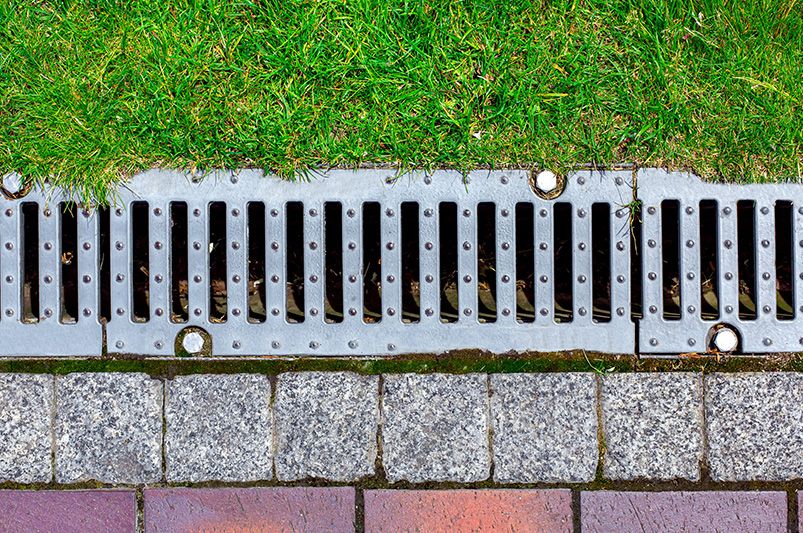
Key Highlights
- Discover innovative techniques to transform your lawn's drainage system and prevent waterlogging.
- Explore the benefits of incorporating organic matter, installing French drains, and creating rain gardens.
- Learn about permeable paving, swales, dry wells, and sump pump systems to redirect excess water effectively.
- Understand the importance of selecting native plants that thrive in moist conditions.
- Find simple solutions for assessing your lawn's drainage needs and determining the best course of action.
Introduction
Are you having trouble with standing water and drainage issues in your lawn? A lawn with good drainage is important for a healthy outdoor area. Too much water can cause many problems. These include root rot, attracting mosquitoes, and damage to your home’s foundation. The good news is there are some smart solutions. For example, a rain garden can help direct water away from your house. This guide will look at these options to help you make your lawn green and healthy.


Innovative Methods to Improve Lawn Drainage
Have you seen puddles or wet spots on your lawn? Don't let drainage issues get you down! With some new ideas, you can change your lawn into a dry and lovely space. There are many solutions, from easy soil fixes to more complex drainage systems, that can fit your needs and budget.
In the upcoming sections, we will look at these tested ways to improve lawn drainage. This will help you say goodbye to water problems and enjoy a healthier, more beautiful lawn.
1. Incorporating Organic Matter to Enhance Soil Structure
One main reason for poor drainage is compacted soil. This type of soil keeps water from getting in. The good news is that you can make your soil better by adding lots of organic matter. This can be compost, manure, or leaf mold. Organic matter works like a sponge. It helps the soil soak up and hold water well.
When you spread organic matter on the lawn and lightly rake it in, it makes little paths for water to flow. This action helps break down the compacted soil, making it drain better and allowing air in. A lawn that can breathe well lets water reach the roots more easily, which helps plants grow strong and healthy.
To get the best results, add a few inches of organic matter to the top 6-8 inches of soil each year. Doing this over time will change your lawn into a well-drained, lush green space.
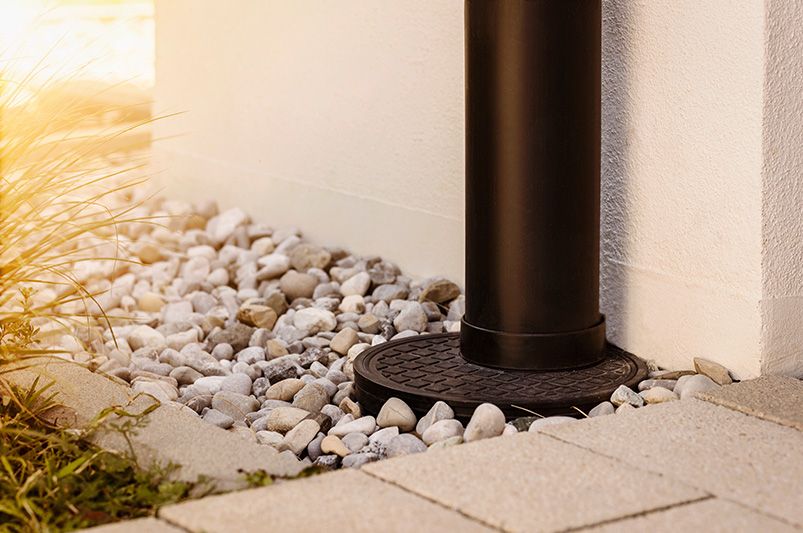
2. Installing French Drains for Effective Water Diversion
For serious drainage issues, a French drain can be a good choice. This is especially true in places where surface water collects. A French drain uses a trench filled with gravel and a drain pipe that has holes. You dig this trench on a slope, so water can flow down to a drainage area, like a dry well or storm drain.
When water goes into the trench, it goes through the gravel and into the drain pipe. The pipe, usually made of PVC, moves the water away from your lawn. This helps stop water from pooling or causing harm. Although adding a French drain needs some digging, it provides a long-term fix for drainage problems.
After it is set up, a French drain does not need much upkeep. This keeps your lawn well-drained for many years. If you need help with the installation, you might want to reach out to a professional landscaper.
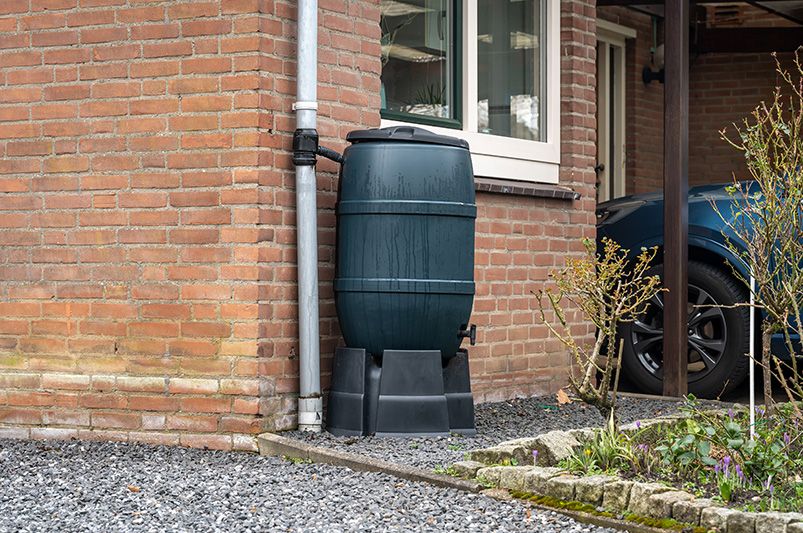
3. Creating Rain Gardens to Capture Runoff
A rain garden is a lovely and green way to control runoff and improve your lawn's drainage. These gardens are placed in shallow areas to catch rainwater that comes from your roof, driveway, or other hard surfaces. By directing the runoff into a rain garden, you stop it from collecting in your lawn and causing harm.
Rain gardens have a mix of garden plants that grow well in both wet and dry conditions. These plants help clean pollutants from the runoff, making your lawn and the environment healthier.
Here are some common rain garden plants that handle water well and look great:
- Marsh Marigold
- Cardinal Flower
- Blue Flag Iris
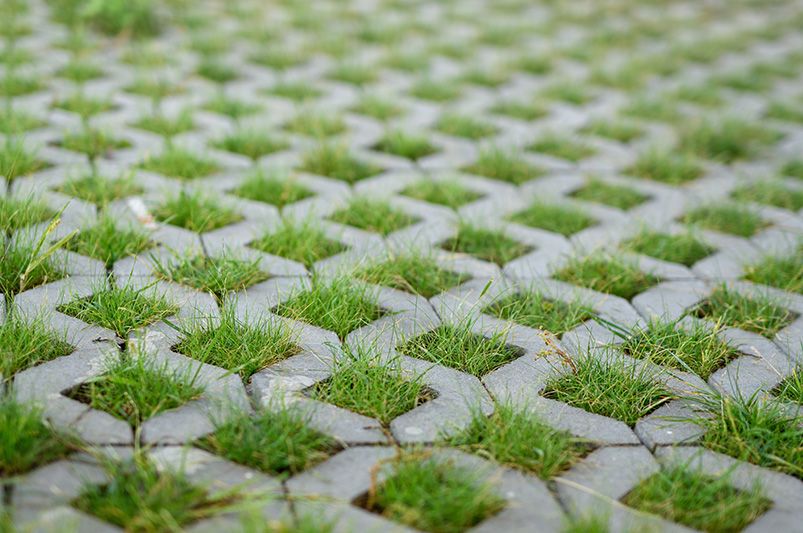
4. Utilizing Permeable Paving Solutions
Driveways, walkways, and patios made from normal paving materials, like concrete, can cause surface water runoff. Permeable paving options are a great choice. They help reduce runoff and support a healthier lawn. These modern materials let water flow through. This helps recharge groundwater and eases the load on your lawn's drainage system.
Unlike regular materials, permeable paving acts like a filter. You can choose from permeable pavers, porous asphalt, and gravel grids. Each has its own good points. These materials have gaps that let water move through. This stops water from overwhelming your lawn's drainage ability.
Using permeable paving in your yard can help lower runoff, lessen flooding, and encourage better drainage practices.
5. Establishing Swales to Redirect Surface Water
Swales are shallow ditches made to catch and redirect surface water. They are a nice-looking and natural way to manage landscape drainage. By adding swales to your yard, you can direct runoff away from areas where it may collect or cause damage. These features fit well into the curves of your lawn. They make your yard more useful and prettier.
Unlike regular drainage ditches, swales are wider and not as deep. They have gentle slopes that help water soak in better and lower the chance of erosion. Grass and other plants can grow in and around the swales. This helps hold the soil in place and cleans the runoff. It also creates a healthy ecosystem.
You can place swales near driveways, walkways, or property lines. They work well to move surface water away, stopping it from flooding your lawn and causing drainage issues.
6. Adopting the Use of Dry Wells for Excess Water
Dry wells are an easy way to manage excess water. They are especially useful where you can't connect to a storm drain or another drainage system. These underground structures act as temporary storage for runoff, allowing water to slowly soak into the soil. By using a dry well, you can stop water from overwhelming your lawn's drainage. This helps prevent waterlogging and damage.
A dry well usually has a big container or a pit filled with gravel or other coarse material. Water from downspouts, driveways, or patios is funneled into the dry well. The water then seeps through the gravel and into the surrounding soil. As the water level inside the dry well goes down, the nearby soil absorbs it. This keeps your lawn from getting too wet.
Dry wells are a great and eco-friendly choice for handling excess water. They help reduce the load on city drainage systems and support groundwater replenishment.
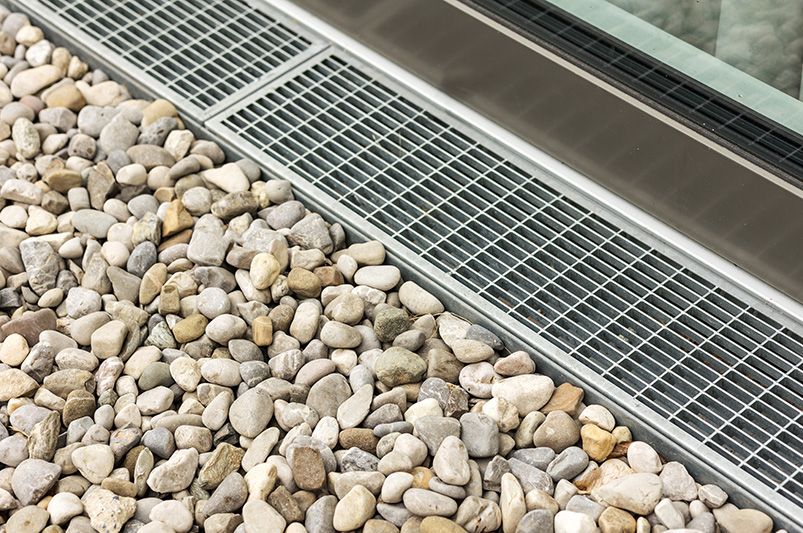
7. Implementing a Sump Pump System for Low-Lying Areas
In lawns with low spots or where water gathers, a sump pump system can really help you out. A sump pump is often set up in a basement or crawlspace. It works to remove water that collects in these low spots. This keeps water from reaching your home’s foundation and causing problems. These systems are especially helpful in places with a lot of rain or high water tables. They give you peace of mind during rainy times.
A sump pump system includes a sump pit, a pump, and a discharge pipe. The sump pit is a basin in the ground where water collects. When water fills the sump pit, it turns on a float switch, which starts the pump. The pump then moves the water through the discharge pipe, taking it away from your home to a safe drainage area.
By taking away water from low areas, a sump pump system protects your home from water damage. It also keeps your lawn well-drained, even when there's heavy rain or melting snow.
8. Introducing Native Plants with High Water Tolerance
One good way to fix drainage issues is to use native plants that can handle a lot of water. These plants grow well in local soil and climate. They thrive in areas that stay wet. Adding them to your yard helps absorb excess water and makes a more natural ecosystem. This stops moisture from causing problems.
Think about making a wet garden or a water garden in spots with poor drainage. These gardens can hold moisture and show off lovely water-loving plants. You can find many vibrant flowers and lush leaves to create a space that looks good and helps the environment.
When you pick native plants, you help manage drainage in your yard. You also help local wildlife, bring in helpful insects, and need less watering and care.
Understanding Lawn Drainage Challenges
Recognizing what causes drainage problems is very important. Factors like soil type, hard ground, too much thatch, and the slope of your lawn can lead to poor drainage. Finding these issues is the first step toward finding good drainage solutions that fit your lawn's specific needs.
It’s also important to understand your local climate and rainfall patterns. Considering these factors will help you choose the best drainage solutions. These can manage excess water, help your plants grow well, and stop future problems.
Identifying Signs of Poor Drainage
Addressing drainage issues starts with recognizing the clear signs of a lawn that drains poorly. Knowing these signs can help you act quickly. This can keep small problems from turning into bigger ones.
One obvious sign is puddles in your yard, especially after it rains or you water your plants. Soggy spots that stay wet long after the rain stops are another sign of poor drainage. You may also find parts of your lawn that are always muddy or spongy. This makes it hard to enjoy being outside.
If you see these signs, it's important to check further. You need to find out what is causing the problem and decide what to do next. Ignoring poor drainage can lead to many issues. These can include root rot in plants, mosquito problems, or even damage to your home's foundation.
The Impact of Local Climate on Drainage Requirements
Your local climate greatly affects how you need to manage drainage for your lawn. It’s important to understand how rainfall, temperature, and soil type work together. This knowledge helps you manage moisture levels so your lawn can grow well.
In areas with a lot of rainfall, you need drainage solutions that can handle more water. On the other hand, places with less rain might need ways to keep moisture in the soil. This is important because it helps prevent the soil from getting too dry. Using soil amendments, like organic matter, can improve both drainage and water retention.
Talking to local gardening experts or extension services can give you helpful tips about the drainage needs in your area. By thinking about your local climate and adjusting drainage solutions, you can help your lawn succeed.
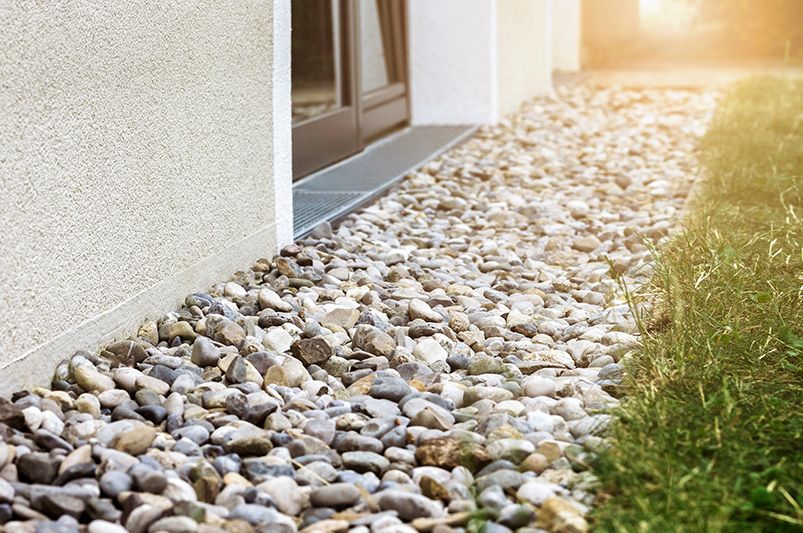
Practical Steps to Assess Your Lawn's Drainage Needs
Recognizing signs of poor drainage is important. However, it is just as important to check how serious the problem is and what might be causing it. You can do this by running a simple drainage test and looking at the shape of your landscape. This helps you understand what your lawn needs for better drainage.
Knowing how bad the issue is allows you to find better solutions. This makes them work better and helps your lawn become healthier and stronger. By being proactive about checking drainage, you can make smart choices for any improvements needed.
How to Conduct a Simple Drainage Test
A simple drainage test can help you understand how serious your drainage problem is. First, dig a trench that is about 6 inches wide and 12 inches deep in the area where you notice drainage issues. Next, fill the trench with water and see how fast it drains.
If the water goes away completely in a few hours, then your soil has good drainage. But if the water stays in the trench for over 12 to 24 hours, you have a drainage problem. This means the soil isn't taking in water well, possibly because it is compacted or has a poor structure.
By doing this easy test, you can better understand your lawn's drainage and find out if you need drainage solutions.
Evaluating Your Landscape's Topography
Take some time to watch how water moves across your yard when it rains. Does it flow away from your home and buildings? Or do you see spots where water collects, causing problems? It’s important to know your land's shape to find areas with too much water or erosion.
For example, if there’s a slope directing water toward your house, it can cause flooding in the basement or hurt the foundation. Knowing these problems helps you use solutions like grading, terracing, or adding drainage systems to manage the water better. You might want to draw a simple map of your property, noting where the concerns are and where the water could go.
When you understand your land better, you can work with nature. This will improve the drainage and make your landscape stronger.
DIY Versus Professional Drainage Solutions
When you want to improve your lawn's drainage, you can either do it yourself or hire a pro. There are many easy drainage solutions that are good for DIY fans. However, some cases might need a skilled landscaper.
Thinking about your skills, tools, and how tough the job is can help you choose what to do. The next parts will show you when a DIY approach works and when it is better to get help from a professional.
When to Consider DIY Drainage Improvements
Many common garden drainage issues can be fixed easily by yourself. As a homeowner, doing simple drainage work can save you money and give you a feeling of success. If your drainage issues are in a small area, like a flower bed or part of your lawn, DIY fixes often work well.
You can boost drainage by raising garden beds and filling them with good-quality soil. Also, you can move downspouts away from problem spots using extensions or splash blocks. This is something you can do without hiring help. Another simple DIY project is spreading organic matter, like compost, to make the soil better. Doing this can really help drainage.
Before starting any DIY drainage project, it’s important to do some research. Make sure you have the right tools and materials. Follow instructions closely, and don’t be afraid to ask for help from your local garden center or home improvement store.
Signs That It's Time to Call in the Professionals
While DIY drainage solutions can work for small projects, larger problems need a professional landscaper. If you have ongoing drainage issues, it’s better to call in an expert.
Installing complex drainage systems, like dry wells or French drains, needs special knowledge and tools. This job is best done by professionals. If your property has steep slopes, tough soil, or underground utilities, getting help from experts is important. This way, you can avoid mistakes and damages that can cost you more.
Professionals know how to find and fix serious drainage problems. They have the right equipment and skills to create solutions that fit well with your landscape. This ensures your drainage system meets your needs effectively.
Conclusion
In conclusion, improving your lawn's drainage is very important for keeping your outdoor space healthy and lively. You can use different methods such as adding organic matter, setting up French drains, or making rain gardens. These ways help you manage excess water and stop water from pooling. To do this, you need to understand the problems that come with lawn drainage. Look at what your landscape needs and pick the right solutions, whether you want to do it yourself or hire a pro. A lawn with good drainage looks better and helps plants stay healthy and strong. Start using these ideas today for a green and well-drained yard.
Frequently Asked Questions
What is the most cost-effective way to improve lawn drainage?
Adding organic matter is a smart way to save money. You can build rain gardens or swales to easily manage runoff. French drains might cost more, but they work well for serious drainage issues.
Can adding plants really help with drainage issues?
Plants that can handle a lot of water help garden drainage a lot. If you place them in the right spots in your garden, you can use up extra moisture. This creates a healthier space with better drainage.


